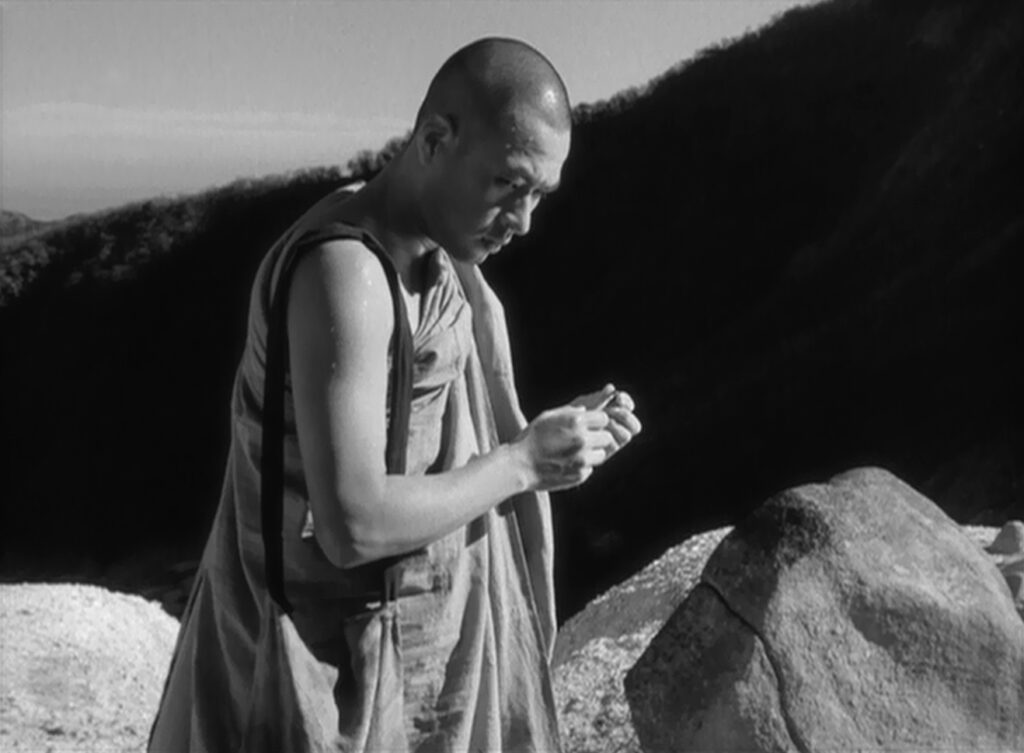
The Burmese Harp
1956, directed by Kon Ichikawa
“The soil of Burma is red, and so are its rocks.” This riddle brackets The Burmese Harp, written over the same landscape in both the opening and ending shots. On its own the sentence may sound trivial and almost redundant – why shouldn’t the country’s soil be the same color as the rocks whose minerals it contains? Yet the deliberate placement of these words at each end of the story leaves little room to doubt their importance.
In the context of a war movie, red soil is likely a metaphor for blood-stained earth. The red rocks are more obscure, but the film reveals their meaning when Mizushima returns to the riverbank north of Mudon to bury the Japanese soldiers. There he unearths a large ruby that a Burmese man immediately identifies with the spirits of the dead. Mizushima will then carry this ruby in a ceremonial procession and bury it inside a reclining Buddha statue. Between the blood-soaked earth and this rare gemstone, therefore, we can see the same contrast that’s illustrated so dramatically at Triangle Mountain when Mizushima tries to persuade the holdout army unit to surrender – namely, a contrast between the bloodlust of war and the preciousness of life.
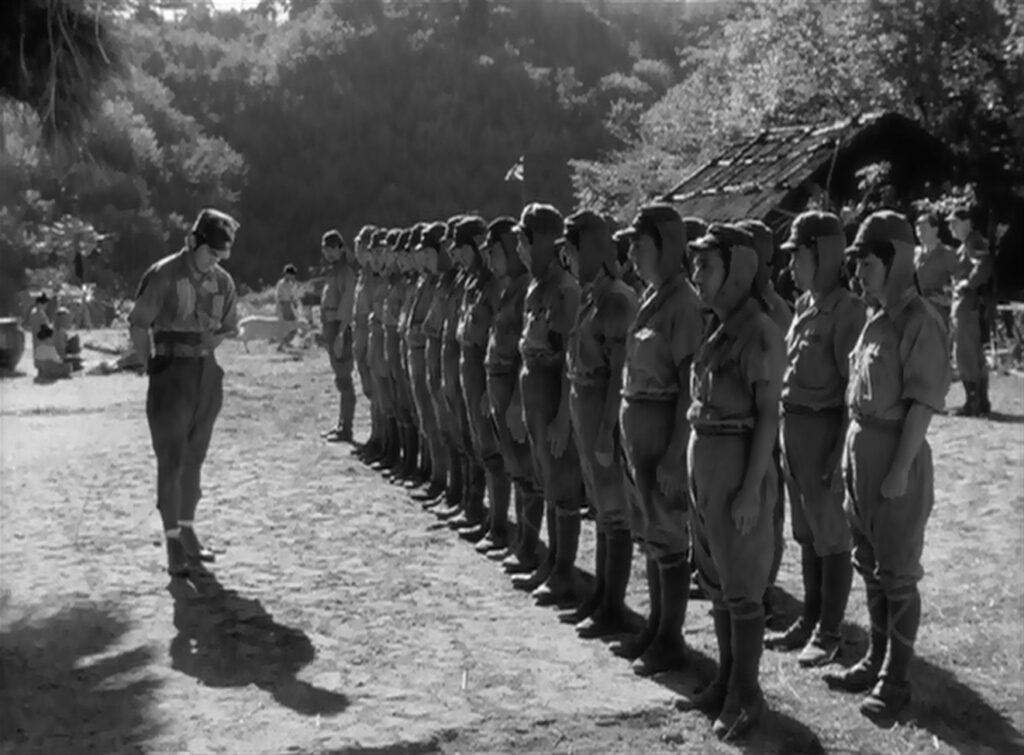
The Burmese Harp upholds the value of life against a militaristic ethos which fights to the death regardless of consequences. Ultimately it’s an argument for peace and against violence, which might sound like an easy case to make; after all, the effects of war are so unattractive compared to peace. But an argument that rests on outcomes is unlikely to persuade many people, and certainly not anyone caught in the frenzy of war. Instead, The Burmese Harp seeks to inoculate us against the urge to fight by shaping attitudes and convictions before strong emotions pull us toward violence.
When Captain Inouye’s unit sits to rest in the opening minutes and begins singing, it’s a surprising image of peace in the midst of war. No one expects warriors to sing so harmoniously. This paradox encapsulates the same contrast that the epigraph expresses between red soil and red rocks, the blood of death and the blood of life. The same contrast separates Inouye’s company from the other Japanese company at Triangle Mountain. Assuming even the least randomness in soldiers’ assignments, we can only conclude that the difference results not from the innate qualities of the men, but from the respective views of life that somehow spread through each unit. Whether the soldiers at the mountain are more typical, or whether the two groups represent two extremes, the film suggests that something as simple as teaching soldiers to sing might be enough to preserve their humanity through a war.
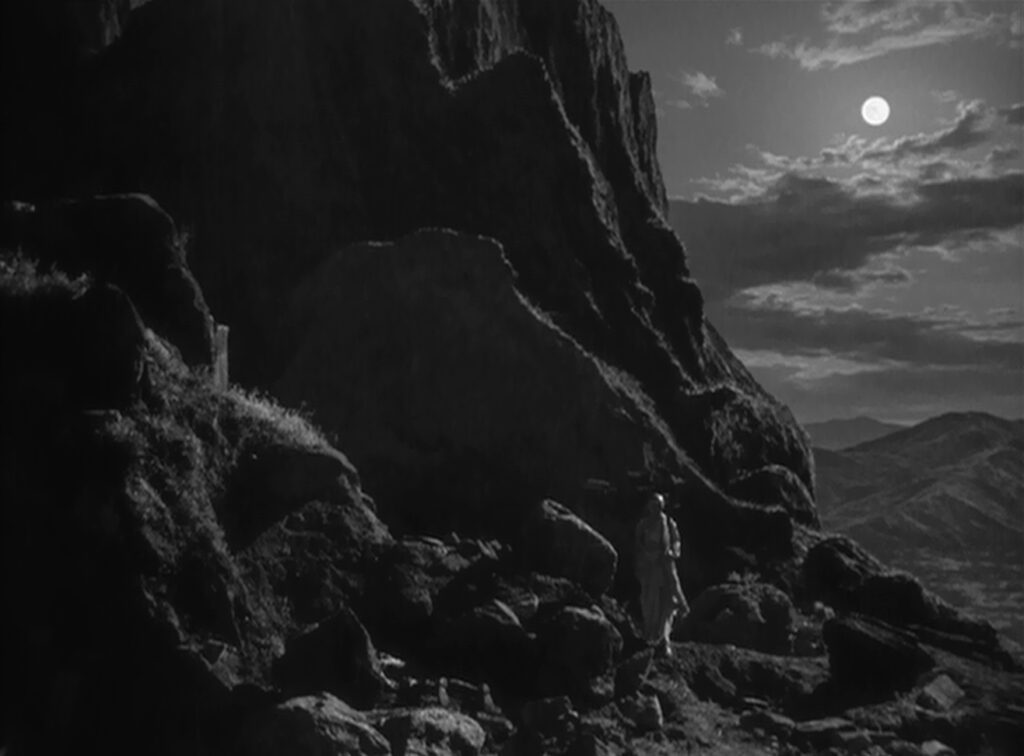
This flexibility of human nature is a cause for hope, and we see it again when Mizushima begins his long march toward Mudon. A Buddhist monk rescues him, takes him in, and feeds him, but when the monk bathes in a river Mizushima steals his robe and runs off to rejoin his unit. It’s a nasty thing to do to someone who was so kind, but the monk gets the better of him in a way, because the robe works an almost magical power, interpellating the soldier into the role the clothing was designed for. Before he reaches his comrades, his transformation is final – he’ll devote his life to holy service and become a Buddhist priest. On a further note of hope, this raises the question of why a soldier’s uniform should not necessarily work a parallel magic – because in spite of their uniforms, Inouye’s soldiers do not embrace war with the same blind fervor as the soldiers at Triangle Mountain. If singing is what saves Inouye’s unit from the others’ fate, it’s probably because music reminds them of the value of life.
The argument between Mizushima and the stubborn soldiers at Triangle Mountain occurs precisely half an hour into the film, and it defines the film’s argument by giving voice to the opposing viewpoint. When Mizushima announces Japan’s surrender, the commanding officer replies: “Surrendering is an insult to those who’ve died! Unlike your unit we’re not filthy cowards! We’ll fight to the death!” No matter how reasonable Mizushima’s counterarguments may be, mere words will not crack such a suicidal resolve. It’s the film’s job to finish Mizushima’s argument for the sake of present and future generations, and The Burmese Harp addresses the officer’s three statements separately:
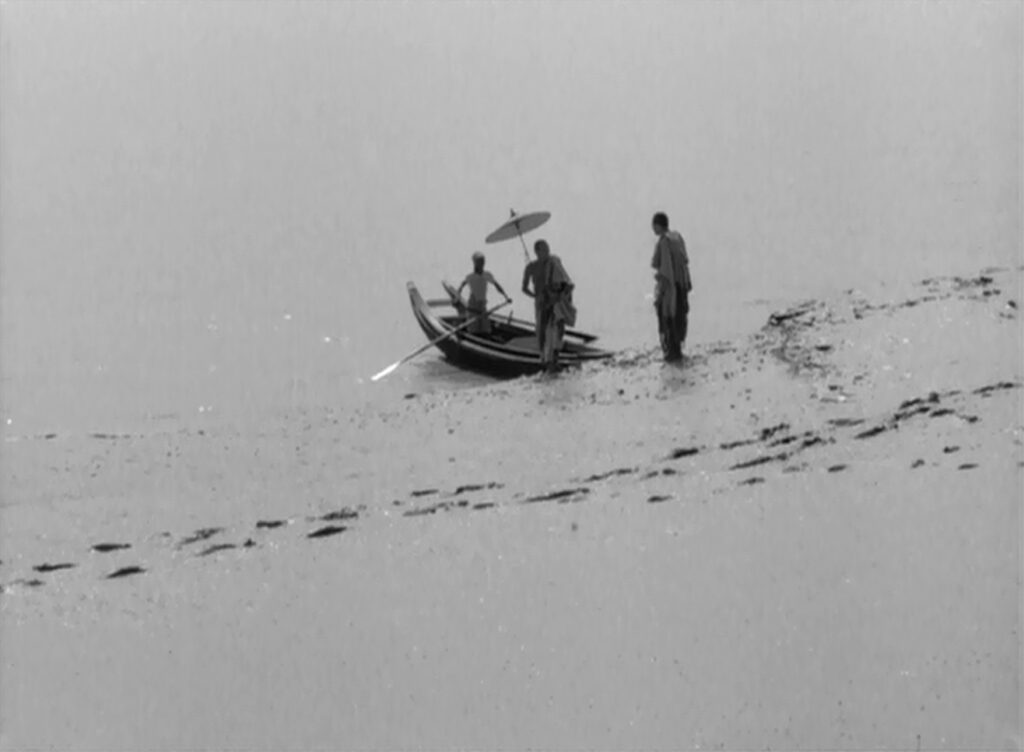
1. “Surrendering is an insult to those who’ve died!”
Mizushima’s actions positively refute the officer. No one is more respectful to Japan’s dead soldiers than Mizushima, who forgoes his homecoming to devote himself to their burial, prepared to spend years combing all of Burma if necessary. By all signs his respect for the dead is heartfelt; he’s not soothing a guilty conscience. Again and again he breaks down at the sight of their exposed and neglected corpses: on the mountainside, in the jungle, on the riverbank. Even the proper burial of an unknown soldier at Mudon affects him deeply.
2. “Unlike your unit we’re not filthy cowards!”
In fact Mizushima’s courage puts his accusers to shame. Minutes ago he had climbed through their automatic cannon fire without flinching. He’s undeterred when they threaten to kill him, and he braves their hostile charge to attempt a unilateral surrender. Earlier he had played his harp atop a cart of explosive ammunition, feigning joy to help his mates escape the British. No one witnessing these actions could credibly call him a coward, and through his example the movie contends persuasively that it takes greater courage to make peace than to attack.
3. “We’ll fight to the death!”
Mizushima’s mission at Triangle Mountain fails because it is virtually impossible. Given only thirty minutes, all he can do is report Japan’s surrender and try to convince the soldiers with words. The movie’s case for peace has a few advantages over Mizushima’s pleas: more time, a less rabid audience, and recourse to concrete lifelike examples instead of the generalities of words. The film shows Mizushima’s courage and respect for the dead, which the soldiers in the mountain are too preoccupied to observe, but more importantly it makes the preciousness of life tangible through its music, beauty, and humanity. An awareness of life’s value accumulates through every turn – the warm encounter with British troops, the trek to Mudon, the bodies littering the countryside, the soldiers’ longing for Mizushima, and the anticipation of homecoming. After watching all of this, the prospect of fighting a lost war to the death must sound absurd.
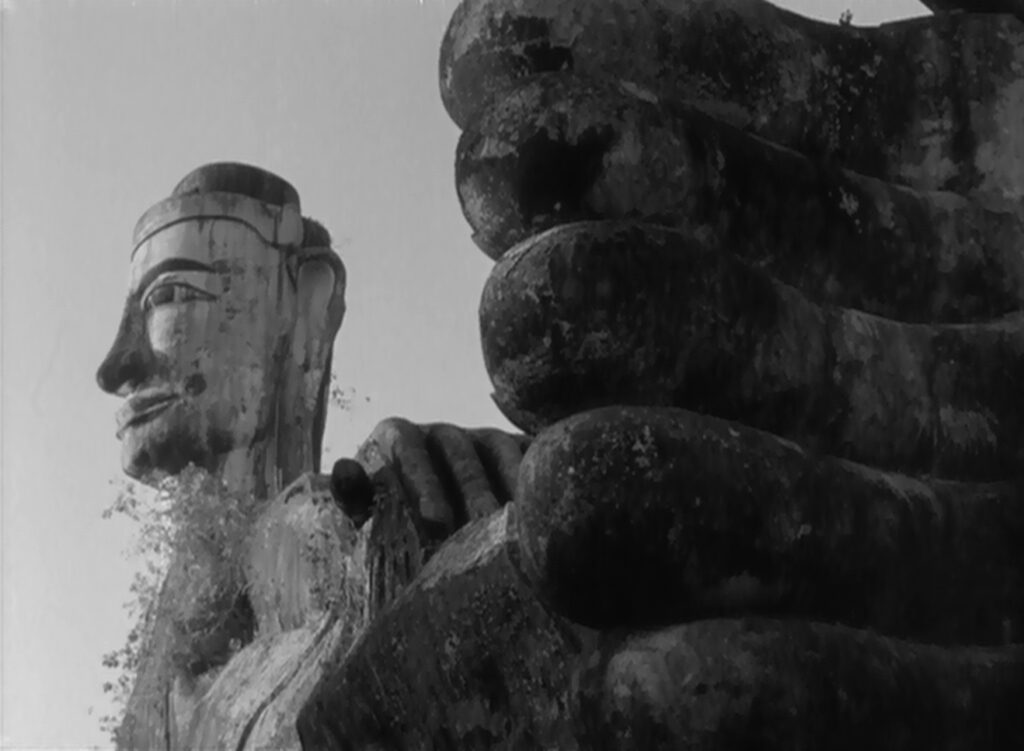
Like the bonfires in Ichikawa’s later film Fires on the Plain, the harp not only gives the film its title but also serves a dual purpose – the one it was designed for, i.e. to make music or (in the case of the fires) to burn chaff, but also as a coded signal in a war zone. Again like the fires, it’s a signal to the viewer as well, because it’s a correlative for the movie’s subject. The harp stands for the inestimable value of life, which the musical scenes express so emotionally, first by humanizing the soldiers, and later by bringing Mizushima and his unit together. The ruby too, through its beauty, its rarity, and its association with spirits, is a correlative for the preciousness of life. The harp and the ruby are further linked, as both are described specifically as “Burmese”.
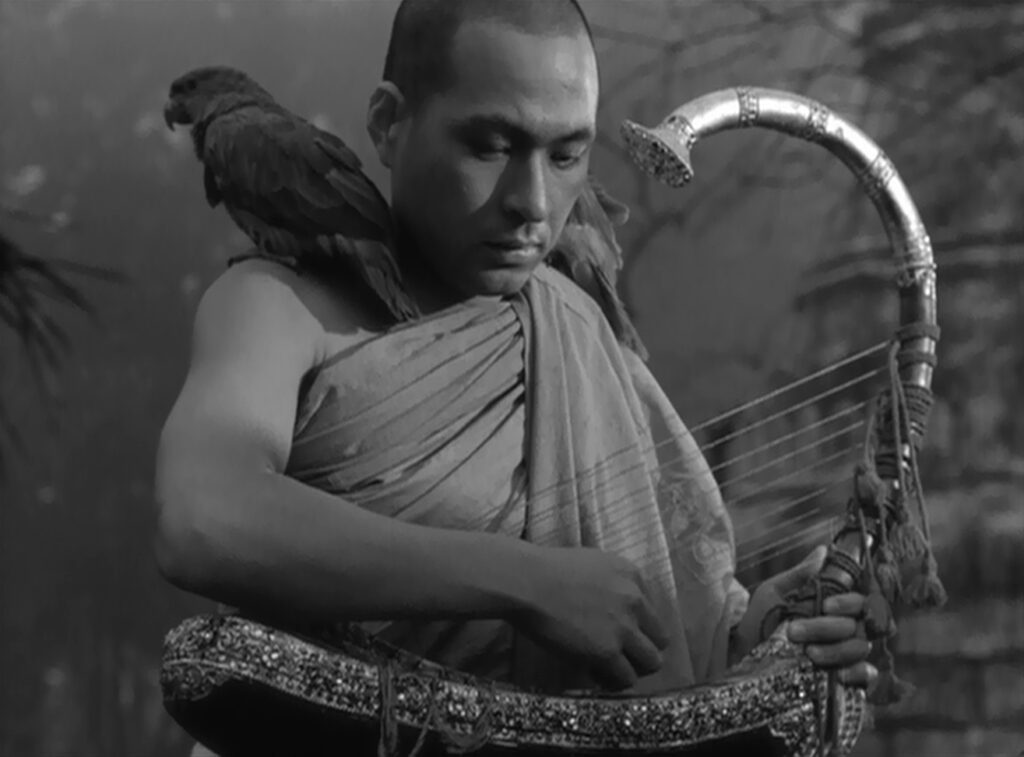
The first and last shots of The Burmese Harp show the same landscape from the same perspective: a cratered plain with a few distant trees, and the same words about Burma’s red soil and red rocks superimposed on the screen. In the closing shot the shadows have shifted slightly, but the biggest difference is the monk now walking into the distance. These two shots look so alike, but their emotional content is worlds apart. The opening shot appears to be a bleak shell-pocked battleground, but at the end we can recognize Mizushima carrying out his mission, and the craters turn out to be lovingly dug resting places for dead souls. That the same landscape can look so different without visual alterations is an eloquent affirmation of life.
CONNECTIONS:
Early Summer – Japanese movie with prominent use of the song Home Sweet Home
The Eighth Day of the Week – Bracketed by same/similar shots which feel different by the end
Fires on the Plain – Title object has dual purpose: its intended use, and as a signal in war
La notte – Situations resolve less dramatically than expected; letter at end
Nostalghia – Affirms the value of home while ending with a calling that’s even more important